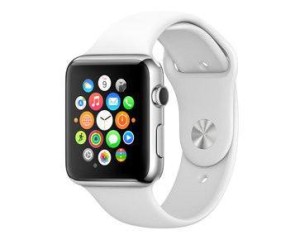- You are here:
- Home
- Blog
- Blog
- Sucking the Soul Out of Experience

I recently read an article in the NY Times titled, How Measurement Fails Doctors and Teachers, which got me thinking about the introduction of tools and process in any industry.
You can take a new tool or process (measurement in this case) and see the pendulum of use swing hard in the opposite direction in the hopes of maximizing the assumed benefits. We overuse it until we understand its limitations at which point use typically stabilizes.
We’re kicking it, throwing it, stretching it, and jumping on it much like a young child does with a new toy in an effort to understand how to use it. The new favorite toy is often promoted as the best thing since sliced bread…until it is not.
I fear that is the case with data and measurement today. We all carry measurement devices in our pocket or wear it on our wrist. We are so acutely aware of the thoughts, feelings, and physical state of ourselves (and others via social media, text, etc) that our comfort with data and measurement has grown substantially — but at what cost?
 Well, that’s what is at the heart of the article. We’re always looking for ways to prove, validate, and justify, which means we tend to turn to more tangible methods to measure results. The output can be incredibly informative, but it can also suck the soul out of the experience.
Well, that’s what is at the heart of the article. We’re always looking for ways to prove, validate, and justify, which means we tend to turn to more tangible methods to measure results. The output can be incredibly informative, but it can also suck the soul out of the experience.
I’ve seen this in my work with managing projects and coaching people. The latest and greatest tools and processes come and go with many being touted as THE answer to our management, dieting, exercising, happiness, relationship prayers. The latest fad is applied, practiced, assessed, and curbed accordingly with an eye to the following:
1 – How easy is it to use
2 – Does it yield reliable results
3 – Is it flexible and adaptable
That last bit strikes me as the most interesting. It seems the promoters of productivity measurement within the medical and education communities are riding the hard swing of the pendulum at the moment and the realities of the ride are now settling in (just read some of the reader comments for the article and you’ll see it!).
This is reinforced in part with the closing couple of paragraphs in the article noted above. Avedis Donabedian was a key influencer in the quality measurement field and developer of Donabedian’s triangle which states,
“…quality can be measured by looking at outcomes (how the subjects fared), processes (what was done), and structures (how the work was organized).”
Before Donabedian died, it seems he stepped back from his process to look at it with a more human eye. Described as a “hard-nosed scientist,” he surprisingly said, “The secret of quality is love.”
This is curiously absent from the Donabedian triangle…
The point is we can’t forget what motivates people who enter the helping profession — love, altruism, the desire to help others. Excessive measurement strips the human side of effort out of the experience and leaves a vacuous, gaping void (and many disengaged employees).
I would submit that same thought can be applied to any field. One of the wonderful things about work is that it offers you membership to its community and the mission it serves.
Community embodies love, support, and inclusion. So, whatever the latest and greatest process or tool to hit your industry, it should be tested with an eye to those it serves. Process implementers can avoid the hard swing of the pendulum by taking incremental implementation steps.
There are too many people, and too few human beings. ~Robert Zend